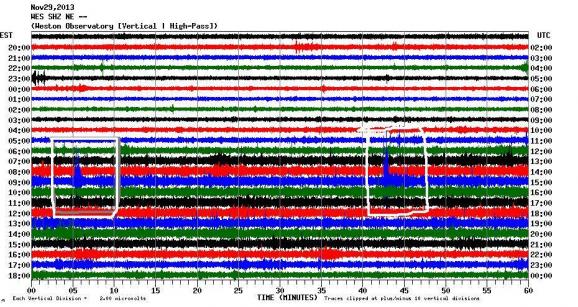
The U.S. Geological Survey says it recorded a 2.1 magnitude earthquake in Connecticut last Friday. According to Groton's Office of Emergency Management, that explains the mysterious loud booms that perplexed several residents over the weekend.
Joe Sastre is the Emergency Management Director for Groton. He says the town fielded a number of 911 calls on Friday with people reporting booming noises. "We were getting, 'I heard an explosion. Something blew up. But I don't see any smoke. I don't see any fires. I don't see any flames,'" Sastre said. "[Emergency] Services, when they were driving through the neighborhood trying to locate something, found a lot of people standing in their front yards asking, 'What's going on?' But nobody actually saw anything."
The mystery remained throughout the holiday weekend, but as seismologists returned to work on Monday the answer became clear -- two microearthquakes centered about two kilometers below the surface at the intersection of Route 184 and 117 (fairly close to the Bess Eaton Donut Shop) were to blame.
Sastre said there were no injuries and no reports of property damage from the quake. He said these types of quakes are fairly common in Connecticut.
But that still leaves the question -- why do earthquakes make sound? For that, I called up Justin Starr, a research assistant at Weston Observatory at Boston College, which monitored the quake. Starr said seismic energy from earthquakes produces "P Waves," which move by compressing whatever medium they travel through. "When a P Wave hits the earth's surface it causes the earth's surface to fluctuate rapidly up and down. Very, very quickly," Starr said.
Basically, the ground mimics the diaphragm of a speaker, amplifying the frequency of the seismic energy, which is low, but high enough for humans to hear as a low-frequency booming noise.
And the quakes raise one more question -- with no tectonic plate boundaries near Connecticut, why does the state get these earthquakes at all? Starr said there's a few theories about this, but one explanation lies in the distinction between inter-and-intra plate earthquakes. Interplate quakes are what they get out in California. Here in New England, we get intraplate, which are quakes that happen within a plate, far removed from any major tectonic fault lines.
Credit to Wnpr.org
No comments:
Post a Comment